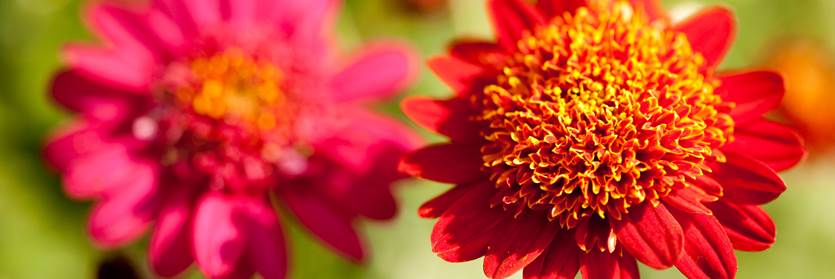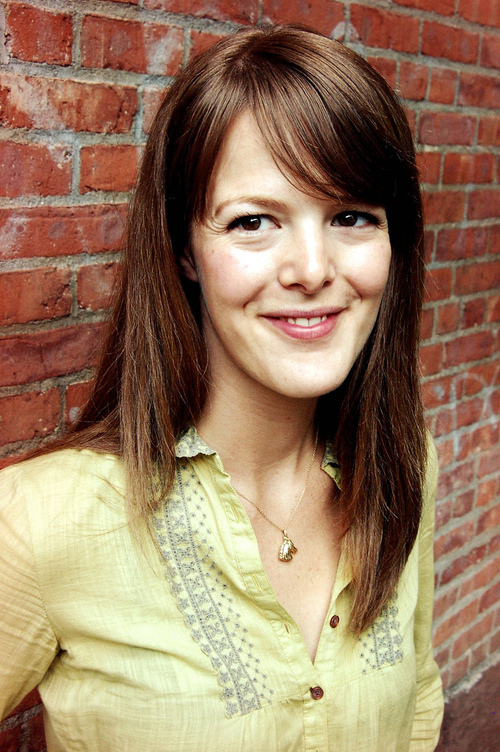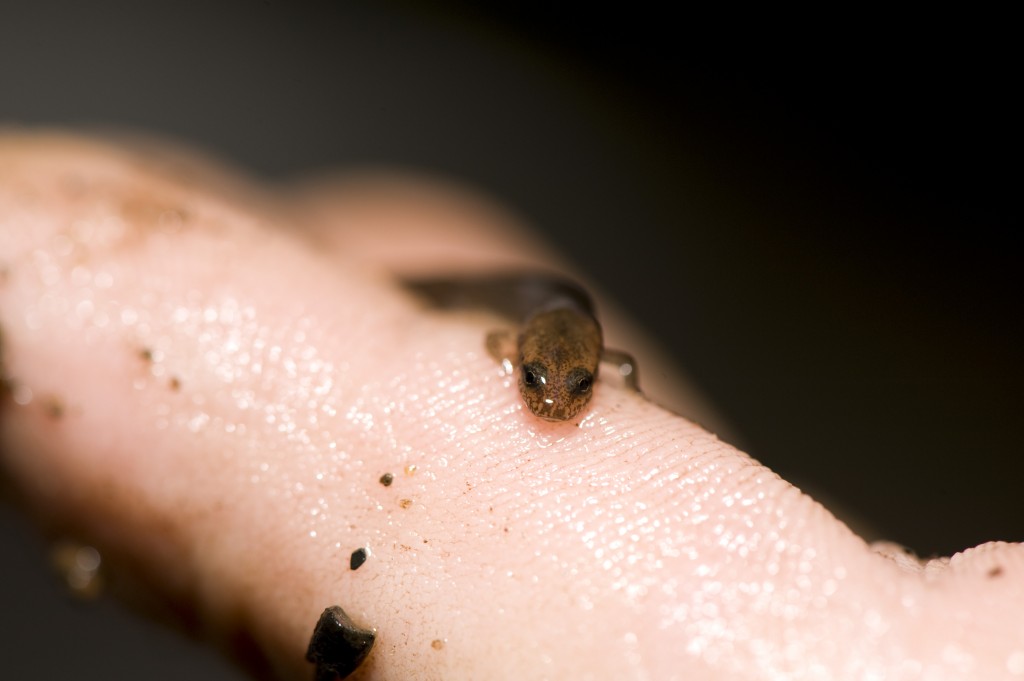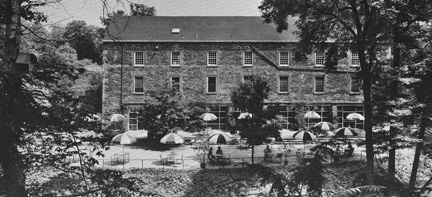Morning Eye Candy: Well, Hello!
Posted in Photography on November 17 2010, by Plant Talk
This reminds us quite a bit of our favorite Twitter user, Common Squirrel.
Do a Little Dance (photo by Ivo M. Vermeulen).

Inside The New York Botanical Garden
Posted in Photography on November 17 2010, by Plant Talk
This reminds us quite a bit of our favorite Twitter user, Common Squirrel.
Do a Little Dance (photo by Ivo M. Vermeulen).
Posted in Photography on November 16 2010, by Plant Talk
This enormous fern hangs from the ceiling in the Nolen Greenhouses where you can currently see an amazing display of Japanese chrysanthemums through this weekend.
Stag Horn Fern (photo by Ann Rafalko)
Posted in Shop/Book Reviews on November 15 2010, by Plant Talk
 Laura Fenton is one crafty lady! We first ran across her work when she wrote about the giant pumpkins for AOL’s home and garden blog ShelterPop. We immediately loved her sense of humor (we thought about charging rent inside the pumpkins, too), and the more we looked, we realized we also loved her sensibility. Laura loves cooking and crafting with in-season, locally sourced veggies, fruits, and flowers (just like we do).
Laura Fenton is one crafty lady! We first ran across her work when she wrote about the giant pumpkins for AOL’s home and garden blog ShelterPop. We immediately loved her sense of humor (we thought about charging rent inside the pumpkins, too), and the more we looked, we realized we also loved her sensibility. Laura loves cooking and crafting with in-season, locally sourced veggies, fruits, and flowers (just like we do).
So, when we had the chance to ask her about her “Favorite Things” for holiday gift giving, we knew it would be a lovely, inspiring list full of hidden gems from the Shop in the Garden. See for yourself!
Posted in Gardening Tips on November 15 2010, by Sonia Uyterhoeven
 |
Sonia Uyterhoeven is Gardener for Public Education. |
Last week I blogged about the process of collecting seeds. Once gathered, the seeds will need to be cleaned and dried before they can be stored.
Some seeds require only minimal cleaning while others need more attention.
If you are collecting seeds from non-fruiting plants, gather the seeds on a dry day. Spread the seeds on newspapers, in a cardboard box, or in an old telephone directory, and allow them to dry between one and three weeks.
Often seeds need to be separated from the chaff (the seed casings and debris). You can do this with a pair of tweezers; not all of the chaff needs to be removed, but just cleaned off a bit.
Posted in Photography on November 15 2010, by Plant Talk
The Stone Mill was recently renovated to a LEED-certified Silver Standard. The beautiful native plantings were part of achieving that certification.
The Stone Mill (photo by Ivo M. Vermeulen).
Posted in Photography on November 14 2010, by Plant Talk
Phormium ‘Pink Stripe’ in the amazing, colorful Perennial Garden.
Stripes (photo by Ivo M. Vermeulen).
Posted in Photography on November 13 2010, by Plant Talk
A Forest denizen makes a rare daytime appearance.
Barred Northern Saw-whet owl (Photo by Ivo M. Vermeulen).
Posted in Around the Garden, Science on November 12 2010, by Plant Talk
 The New York Botanical Garden contains not just an amazing array of flora, it is also home to an amazing diversity of fauna. There are hawks and owls, Jose the beaver, squirrels of many colors, bunnies, tiny mice, various migrating birds, and I hear tell of a duet of turkeys (though I haven’t yet seen them for myself). But it is one of the Gardens smallest animals that was our attention a few weeks ago: salamanders.
The New York Botanical Garden contains not just an amazing array of flora, it is also home to an amazing diversity of fauna. There are hawks and owls, Jose the beaver, squirrels of many colors, bunnies, tiny mice, various migrating birds, and I hear tell of a duet of turkeys (though I haven’t yet seen them for myself). But it is one of the Gardens smallest animals that was our attention a few weeks ago: salamanders.

The Garden’s native Forest is home to two distinct populations of these small amphibians: Plethodon cinereus, the terrestrial Redback Salamander and Eurycea bislineata, the aquatic Northern Two-Lined Salamander.
Learn more about what salamander can teach us about the environment below.
Posted in Exhibitions on November 12 2010, by Plant Talk
 |
Jane Dorfman was Reference Librarian/Exhibitions Coordinator in the LuEsther T. Mertz Library. |
 In recognition of the newly renovated and rededicated Lillian and Amy Goldman Stone Mill, the LuEsther T. Mertz Library has installed a display in the Rare Book and Folio Room window that details the evolution of the building.
In recognition of the newly renovated and rededicated Lillian and Amy Goldman Stone Mill, the LuEsther T. Mertz Library has installed a display in the Rare Book and Folio Room window that details the evolution of the building.
The display includes historic images of the dam and the two mills built by the Lorillards, the family who purchased the site in 1792 on the property that would become The New York Botanical Garden. The family built a major tobacco manufacturing company, one that rivaled those in Virginia. The top image pictured is circa 1936 and the other is from 1967.
 Originally built in 1840, the current structure was the third mill on the site. The mill used the Bronx River to power the waterwheels that produced tobacco and snuff. The mill was abandoned in 1870 when the company moved to New Jersey and was later purchased by the City of New York for parkland. It wasn’t until 1937 that the mill was officially transferred to the Garden.
Originally built in 1840, the current structure was the third mill on the site. The mill used the Bronx River to power the waterwheels that produced tobacco and snuff. The mill was abandoned in 1870 when the company moved to New Jersey and was later purchased by the City of New York for parkland. It wasn’t until 1937 that the mill was officially transferred to the Garden.
The display will run through January and is available for viewing during Library hours: Tuesday through Thursday, 12–6 p.m., and Friday and Saturday, 12–5 p.m.
Click here to view a video of the opening of the Stone Mill in September.
Posted in Photography on November 12 2010, by Plant Talk
How do you move a tree from point A to point B? Very carefully (and with a really big crane).
The root ball tied up (Photo by Ivo M. Vermeulen).
The Katsura tree goes up (Photo by Ivo M. Vermeulen).
Look who popped out of the root ball! (Photo by Ivo M. Vermeulen)